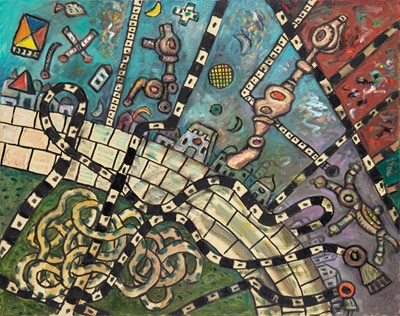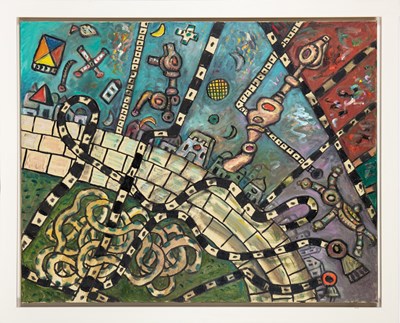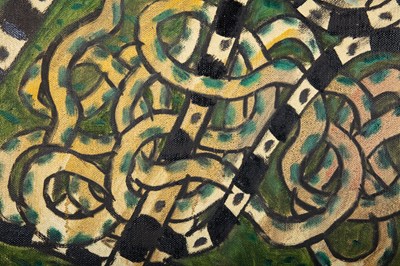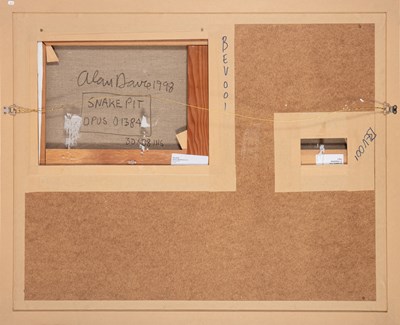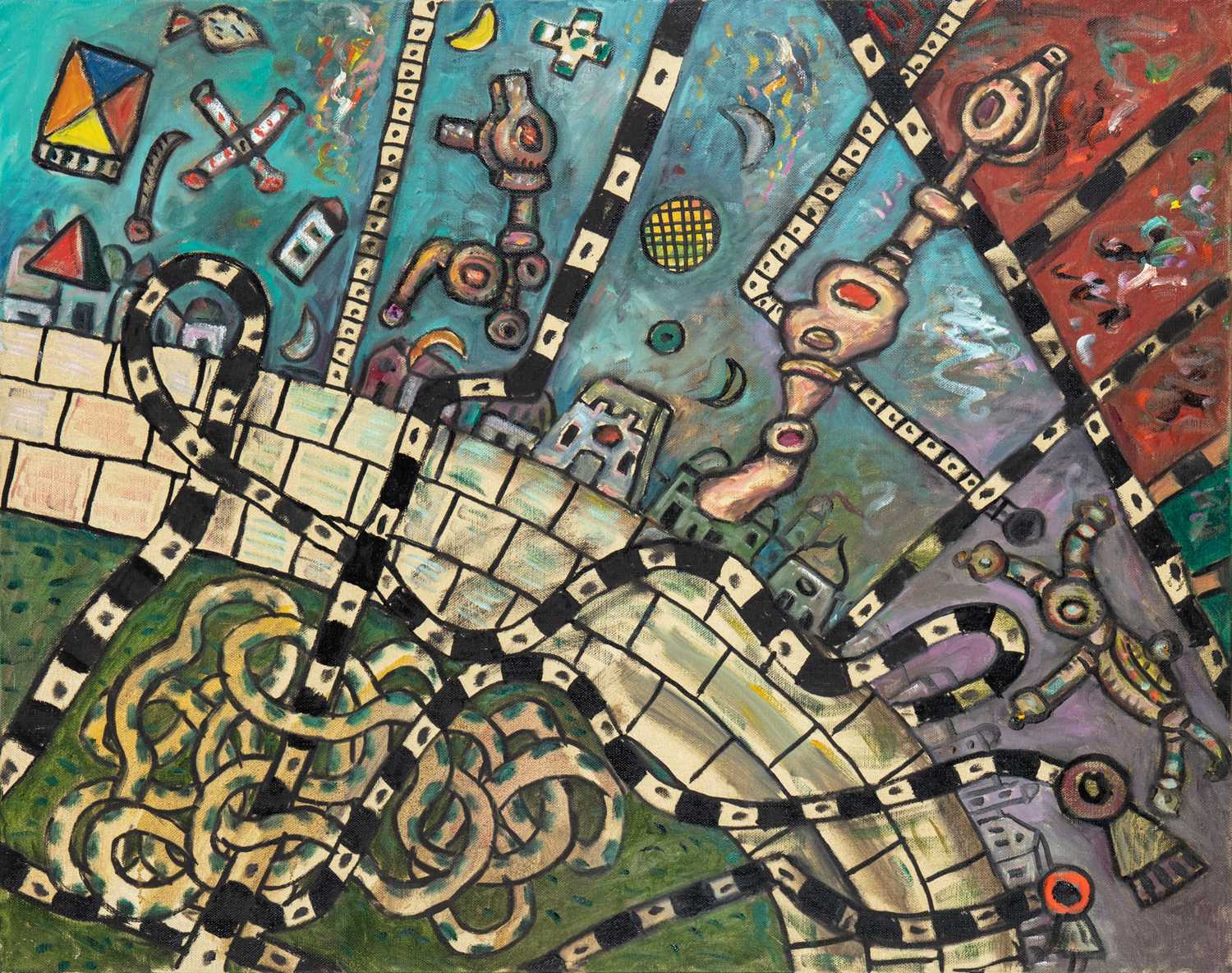13th Dec, 2023 12:00
Fine Paintings, Works on Paper & Sculpture
49
⊕ ALAN DAVIE (BRITISH 1920-2014)
SNAKE PIT
signed, titled, inscribed and dated Alan Davie 1998 / SNAKE PIT/ OPUS O.1384 / 30 X 38 INS on the reverse
oil on canvas
76 x 96cm; 30 x 38 1/4in
110 x 87cm; 43 1/4 x 34 1/4in (framed)
Property from a Deceased Estate, London
Provenance
Gimpel Fils, London
Alan Davie grew up in Grangemouth, near Edinburgh. His early career was dominated by music, his love of jazz, and playing tenor sax in the Tommy Sampson Orchestra. Davie travelled extensively and was introduced to the work of Paul Klee, Jackson Pollock and Joan Miro while in Venice. It was the American Abstract Expressionists which, along with his interest in Zen Buddhism, had the greatest influence on his work as an artist and, especially, brought about his love of the spontaneous. Davie worked in a similar way to Pollock: he would stand over a painting which was laid on the floor adding multiple layers of paint, often covering over the original work many times. As his technique became more controlled, recognisable symbols began to appear in his compositions often inspired by aboriginal art and native American ceramics as in the present lot and lot 50.
Sold for £2,400
SNAKE PIT
signed, titled, inscribed and dated Alan Davie 1998 / SNAKE PIT/ OPUS O.1384 / 30 X 38 INS on the reverse
oil on canvas
76 x 96cm; 30 x 38 1/4in
110 x 87cm; 43 1/4 x 34 1/4in (framed)
Property from a Deceased Estate, London
Provenance
Gimpel Fils, London
Alan Davie grew up in Grangemouth, near Edinburgh. His early career was dominated by music, his love of jazz, and playing tenor sax in the Tommy Sampson Orchestra. Davie travelled extensively and was introduced to the work of Paul Klee, Jackson Pollock and Joan Miro while in Venice. It was the American Abstract Expressionists which, along with his interest in Zen Buddhism, had the greatest influence on his work as an artist and, especially, brought about his love of the spontaneous. Davie worked in a similar way to Pollock: he would stand over a painting which was laid on the floor adding multiple layers of paint, often covering over the original work many times. As his technique became more controlled, recognisable symbols began to appear in his compositions often inspired by aboriginal art and native American ceramics as in the present lot and lot 50.
Auction: Fine Paintings, Works on Paper & Sculpture, 13th Dec, 2023
